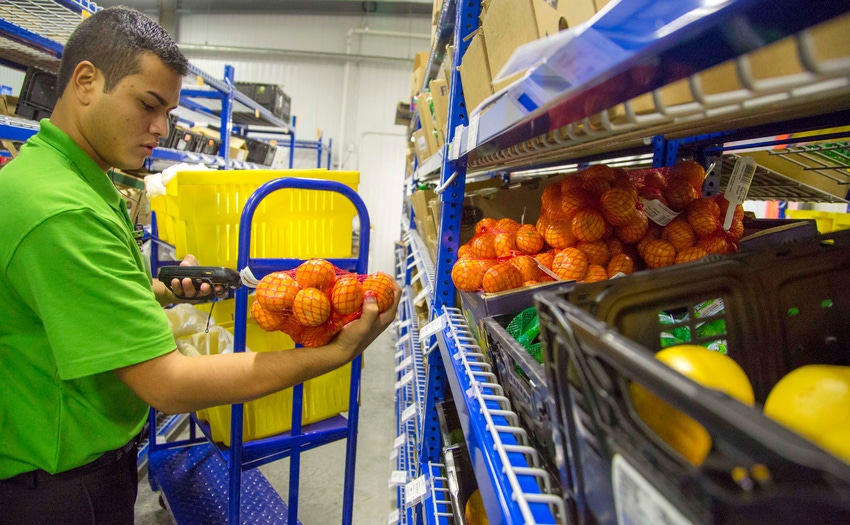How the right packaging can improve online grocery experiences
Forward-thinking online grocers and food processors that sell to them are developing packaging strategies to meet shopper demand and earn long-term brand loyalty.
April 12, 2016

Barry Clogan
More than half of all global consumers are willing to purchase groceries online in the future, while 25% are already doing so, according to a Nielsen survey. To meet this increasing demand for digital grocery services, many retailers are adopting ecommerce solutions in addition to existing brick-and-mortar stores. However, while demand for online groceries is increasing, so is consumer choice. With meal solution services like Blue Apron, HelloFresh and Plated now contributing to a multi-billion dollar industry—and more grocery stores providing ecommerce platforms—grocers need to adapt.
In response, forward-thinking online grocers and food processors that sell to them are developing packaging strategies to meet shopper demand and earn long-term brand loyalty. When it comes to online grocery shopping, consumers have high expectations for the quality and freshness of the food they’re ordering for delivery or in-store pickup. Grocery retailers looking to drive more revenue online simply cannot afford to ignore these concerns.
Packaging has a clear impact on the customer delivery and in-store pickup experience and—with so many shoppers logging on without an established brand loyalty—it’s an area grocers can focus on to create consistancy with online customers. To deliver a packaging experience that benefits all parties in the ecommerce value chain, grocers and their food and beverage vendors should implement these two strategies:
1. Update shipment and safety procedures
As we’ve found from our own shopper data, the majority of online orders involve perishable items. Fifty percent include meat and seafood, 84% include produce such as fruits and vegetables and 93% include dairy products. With hard data to solidify the high frequency at which shoppers are ordering perishable items, it’s a given that grocers need to have the proper systems in place to keep these orders fresh.
For example, grocers should use temperature-controlled vans to ensure that frozen products never fall outside of mandated temperatures, and orders awaiting pick-up should be stored within dedicated freezers or refrigerators. Similarly, grocers need to develop processes for maintaining the cold chain, by gathering items for pickup or delivery in an order that minimizes the time any fresh, chilled or frozen products are kept outside mandated temperatures. Additionally, hazardous items like cleaning supplies should be excluded from being packaged alongside fresh products like fresh meat.
Due to grocery delivery’s relatively new nature, some shoppers may fear that grocers are not experienced in adequately packaging and shipping perishable goods. This is an opportunity for grocers—especially those new to ecommerce—to win more share of the market by implementing and following best practices. And once procedures like a cold chain are implemented, grocers should work to make their standards of care well known, educating shoppers on their safety procedures to earn trust and build dependable relationships.
2. Improve secondary packaging
So long as orders abide by the cold chain, grocers are at liberty to personalize their secondary packaging decisions. Grocery retailers can choose from a variety of totes, bags and boxes that are more attractive to shoppers than a traditional plastic bag and can improve consumers’ perception. For example, brown paper bags are a great way to package fresh produce like vegetables and fruits. Brown bags can replicate a “market feel” and cause shoppers to see their orders as more organic and higher quality. While this packaging choice is a big investment upfront, it can help grocers build trust with consumers and shape customer sentiment towards their brand.
What’s more, many of these attractive ecommerce packaging decisions also benefit the environment, which in turn can help foster long-term loyalty. Grocery shopping is something consumers do once a week on average, so giving them a chance to turn this time consuming task into one that can have a “feel good” impact is an excellent way to encourage repeat purchases. For instance, the previously mentioned brown bags are reusable, or can be made from recycled papers. Also, echoing glass milk bottles of days past, today’s grocers can deliver groceries in durable corrugated boxes that can be reused.
While safety and food quality should always come first, secondary packaging options can address delivery needs while taking into account growing consumer inter
You May Also Like


